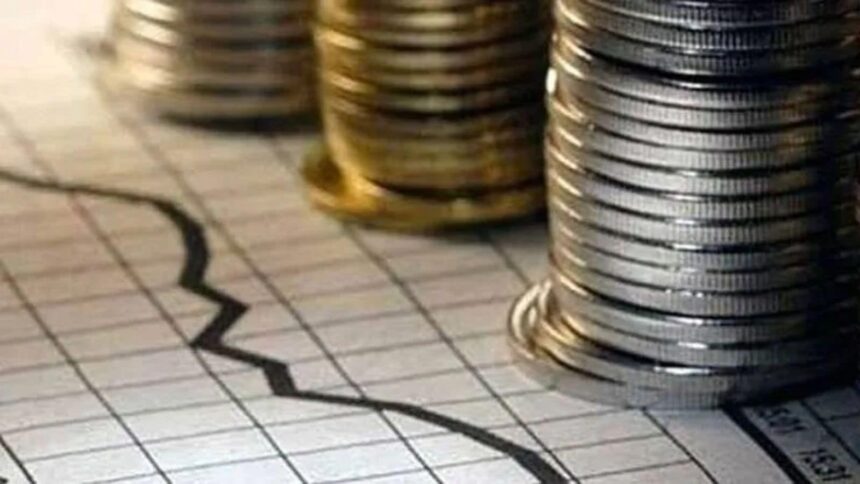The corporate sector, a key driver of economic growth, witnessed a subdued performance in the quarter ended March 2025, with both profit and sales growth slowing down. The weak macroeconomic conditions and shifting geopolitical landscape, marked by trade uncertainties, have cast a shadow over the industrial horizon.
An analysis of fourth-quarter results of 1,787 companies listed on stock exchanges, conducted by Bank of Baroda, showed that the profit after tax (PAT) of these companies grew by 9.2 per cent in Q4 FY25, compared to 12.6 per cent in the corresponding quarter of the previous fiscal. In absolute terms, their net profit stood at Rs 3.43 lakh crore, as against Rs 3.13 lakh crore attained in the quarter ended March 31, 2024.
Sales of these companies rose by 5.7 per cent to Rs 28.81 lakh crore in Q4 FY25, down from a growth of 9.2 per cent to Rs 27.25 lakh crore in the fourth quarter FY24. During the reporting quarter, net profit margin (NPM) increased to 11.9 per cent, compared to 11.5 per cent in the March 2024 quarter.
The slowdown in profit and sales growth reflects the challenges faced by the corporate sector in navigating the uncertain economic environment. The weak macroeconomic conditions have impacted demand, leading to a slowdown in sales growth. At the same time, companies have struggled to maintain profitability amidst rising costs and trade uncertainties.
The RBI had revised downwards the real gross domestic product (GDP) forecast for 2025-26 at 6.5 per cent from 6.7 per cent projected in the February 2025 policy. “This downward revision essentially reflects the impact of global trade and policy uncertainties,” RBI Governor Sanjay Malhotra said while unveiling the monetary policy last month.
“Growth in both sales and net profit was lower in Q4 FY25 relative to last year. Growth in net profit is still impressive at 9.2 per cent. Net profit margin has shown sequential improvement, which is a positive sign,” said Bank of Baroda’s Chief Economist Madan Sabnavis.
Excluding services sector companies, the analysis showed that the net profit of 1,079 manufacturing companies increased by 13.7 per in Q4 FY25, compared to a degrowth of 2 per cent in the year-ago quarter. During the March 2025 quarter, these companies posted net profit of Rs 1.66 lakh crore, higher than Rs 1.46 lakh crore recorded in Q4 FY24.
Their sales grew by 3.9 per cent in the March 2025 quarter, slower than the 4.7 per cent growth posted in Q4 FY24.
“During the quarter, consumer sentiment remained largely stable, supported by improving rural demand and mixed trends across mass and affluent urban segments. Margins for most players were under pressure due to input cost pressures,” Marico Ltd Managing Director (MD) and CEO, Saugata Gupta, said during the Q4FY25 earnings call.
The company reported an 8 per cent increase in PAT at Rs 343 crore in Q4 FY25, from Rs 318 crore in Q4 FY24.
In the earnings call after announcing the Q4 FY25 results, Hindustan Unilever CEO and MD, Rohit Jawa said FMCG (fast-moving consumer goods) market witnessed subdued demand trends in the financial year 2024-25. Rural demand continued to improve gradually while urban demand moderated over the year.
Amid a challenging global business environment, Reliance Industries Ltd (RIL) reported a 6.4 per cent rise in consolidated net profit at Rs 22,611 crore for the quarter ended March 2025 as against Rs 21,243 crore in the same period of last year. Significant demand-supply imbalances in downstream chemicals markets have led to multi-year low margins. “FY2025 has been a challenging year for the global business environment, with weak macro-economic conditions and a shifting geo-political landscape,” said RIL Chairman and MD Mukesh D. Ambani while announcing the quarterly results recently.
Domestic companies expect improvement in quarterly performance in FY26, driven by higher consumption due to lower food and a healthy monsoon. “US tariff policy remains a downside risk to industrial outlook. As of now, the pause on US reciprocal tariff hike provides temporary relief, but the 10% universal tariff hike by US remains in force since April,” said Dharmakirti Joshi, Chief Economist Crisil.
The anticipated tariff hikes after June, coupled with slower global growth are likely to hit export demand. The anticipated India-US trade deal remains a monitorable. Investment prospects too face heightened uncertainty due to high tariffs, their continued escalation/de-escalation and lack of clarity on where they will eventually settle, Joshi said.








